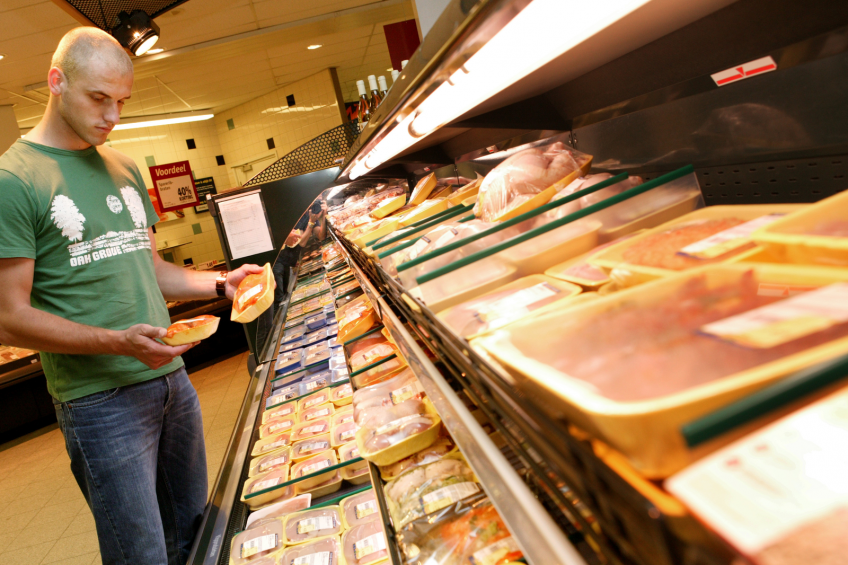Retail poultry: US record lowest Salmonella levels

The prevalence of Salmonella in retail poultry in the United States is at its lowest level since testing began in 2002, plus there has been a reduction in this bacteria’s resistance to antibiotics important for human health.
This is according to an interim report released by the US Food and Drug Administration.
From January 2014 – June 2015, antimicrobial resistance in Salmonella isolated from raw retail meat and poultry was collected through the National Antimicrobial Resistance Monitoring System (NARMS).
In ground turkey, the prevalence of Salmonella has declined from a high of 19% in 2008 to 6% in 2014. Retail chicken over the same time period has dropped from 15% to 9%.
Multiple samples tested
NARMS focuses on resistance to antibiotics that are considered important in human medicine as well as multidrug resistance (described by the FDA as resistance to 3 or more classes of antibiotics). Under the NARMS programme, samples are collected from humans, food producing animals and retail meat sources, and tested for bacteria to determine whether such bacteria are resistant to antibiotics used in human and veterinary medicine.
Decline in antibiotic resistance
Salmonella resistance to ceftriaxone (an important antibiotic used to treat seriously ill patients) from chicken sources continued to decline steadily from a high of 38% in retail chicken meats in 2009 to 18% in 2014, and 5% during the first half of 2015. In ground turkey isolates, ceftriaxone resistance was detected in 7% of 2014 isolates and 4% of 2015 isolates collected through June, which represents an 80% decline since 2011 when resistance peaked at 22%.
Fluoroquinolones like ciprofloxacin are classified as critically important for the treatment of Salmonella infections. Ciprofloxacin resistance was absent in Salmonella from poultry and beef, although a single isolate was found in pork.
All Salmonella from retail meats were susceptible to azithromycin, another important antibiotic recommended for the treatment of Salmonella and other intestinal pathogens. Multidrug resistance in Salmonella continued to show a downward drift in chicken and turkey from 2011 levels of 45% and 50%, respectively, to 20% and 36% in June 2015.
National Chicken Council pleased with progress
Ashley Peterson, National Chicken Council senior vice president of scientific and regulatory affairs, said the council was pleased to see many positive trends in the data continue, including a decrease in resistance in several foodborne pathogens, Salmonella being at the lowest levels since testing began, and that first-line antibiotics remain effective in treating illnesses. “Analysing resistance patterns, as these reports do, is much more meaningful to public health outcomes than examining antibiotic sales data,” she said.
“Reports like this provide a strong case that the continued judicious use of antibiotics by poultry producers, coupled with ongoing strategies to reduce Salmonella, are aiding in the reduction of the pathogen and the reduction in resistance. Most chicken producers are well ahead of the December deadline to phase out medically important antibiotics for growth purposes.













